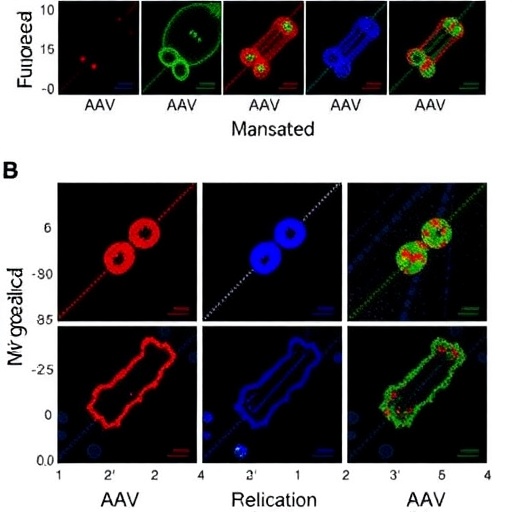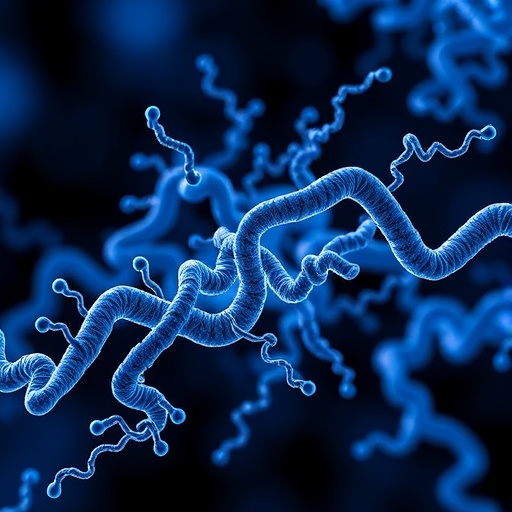Hormone treatment can help reduce cysts in fruit fly renal tubules, according to Cassandra Millet-Boureima and Chiara Gamberi

Credit: Concordia University
A hormone commonly associated with sleep-wake regulation has been found to reduce cysts in fruit flies, according to Concordia researchers. It’s a finding that may affect the way we treat some kidney diseases and reduce the need for kidney transplants.
In a new paper published in the journal Molecules, alum Cassandra Millet-Boureima (MSc 19) and Chiara Gamberi, affiliate assistant professor of biology, write that melatonin was found to reduce cysts in the renal tubules of fruit flies. These tubules are also found in more complex mammals, including humans, where they are called nephrons. This study, which builds on previous studies by Millet-Boureima and Gamberi, was co-authored by Roman Rozencwaig and Felix Polyak of BH Bioscience in Montreal.
The researchers hope that their findings can be applied to treating people suffering from autosomal dominant polycystic kidney disease. ADPKD is a genetic chronic and progressive disease characterized by the growth of dozens of cysts in the nephrons. It is incurable and affects approximately 12.5 million worldwide.
Similarities big and small
Because nephrons in vertebrates are embedded in other tissue, the researchers experimented on Drosophila — the common fruit fly.
“Drosophila conserves many of the renal pathway components found in vertebrates and have anatomically isolated renal tubes,” Gamberi explains. “With microdissection, we can isolate the tubules and conduct biochemical and molecular analysis.”
The researchers bred fruit flies bearing the Bicaudal C gene mutation. It is known to cause kidney cysts in all manner of living beings, from flies to frogs to mice to humans.
Over 18 days, Millet-Boureima administered melatonin to 50 Drosophila and ethanol to a control group. She then dissected the flies and scored their cysts, a process yielding a cystic index. She found that the melatonin-treated flies had much fewer and smaller cysts than the control. Because Millet-Boureima was skilled at dissecting the insects and evaluating the recovered renal tubules, she was able to avoid bias in the count.
She was also able to distinguish three separate sections of the Drosophila tubule, each with its own unique function, and assign the cysts to a particular section. After testing several compounds on the same family of cells, she observed different activities along the length of the tubule. The researchers realized that they could potentially develop targeted treatment depending on the location of the cysts in a patient’s nephrons.
“Biologically speaking, this has a lot of potential that we will obviously develop,” Gamberi says.
Helping without harming
Though Gamberi says melatonin has not been previously used to treat PKD, she does think it holds some promise. PKD is a chronic disease, so treatment cannot include any toxic components. This rules out chemotherapy and tumour-killing antineoplastics used in oncology, for instance. However, melatonin is entirely non-toxic and shares certain properties with antineoplastics and anti-inflammatory agents.
“We know from oncology that melatonin has two effects when it is administered with chemotherapy,” Gamberi explains. “First, it acts as a drug adjuvant to the chemotherapy, making it work more effectively against cancer cells. Second, it appears to protect healthy cells from the toxicity of the chemotherapy. Basically, melatonin increases the specificity of the chemotherapy. We hope that it can have a similar positive effect when used with an anti-ADPKD drug like tolvaptan, which can damage the liver.”
The researchers are keen to share their findings as quickly as possible.
“I hope there will be more research on the drugs we tested and that we get more results that will help the PKD community,” Millet-Boureima says.
###
Read the cited paper: “Cyst Reduction by Melatonin in a Novel Drosophila Model of Polycystic Kidney Disease.”
Media Contact
Patrick Lejtenyi
[email protected]
Original Source
https:/
Related Journal Article
http://dx.





